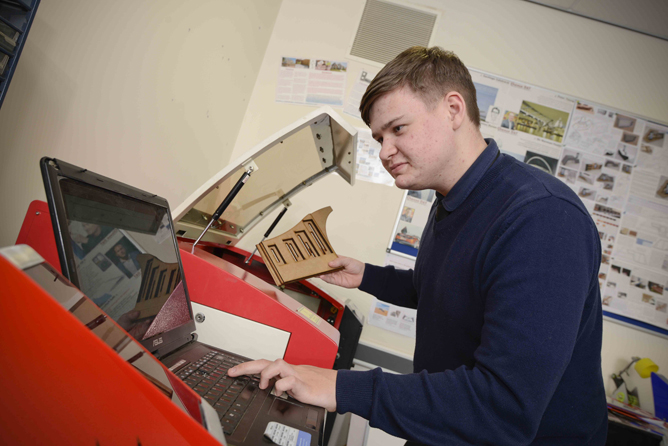Product Design focuses on taking a commercial product from an initial concept through to prototyping and manufacture.
This creative and thought-provoking qualification gives students the practical skills, technical ability, theoretical knowledge and confidence to succeed in a number of careers, especially those in the creative design and engineering industries.
Why Product Design?
You will investigate historical, social, cultural, environmental and economic influences on design and technology, whilst enjoying hands on opportunities to put your learning into practice by designing and producing prototypes of your choice, which could range from jewellery work to architectural projects to domestic or industrial designs. You will be combining aesthetic tastes, functionality and financial considerations in a way that few other courses teach you to do. Students will gain a real understanding of what it means to be a designer, alongside the knowledge and skills sought by higher education and employers, such as presentation skills and communication skills.
Students will work to deadlines and industry standards; experiment with new technologies; communicate their ideas using a full range of IT and presentation packages; think laterally and use analytical skill. Study is undertaken in a collaborative studio and workshop fully equipped with rapid prototyping, laser cutting, CAD modelling and traditional prototyping machinery. Product design students will generate creative, practical and marketable solutions to real-life problems.
Any special requirements?
You must have an enthusiasm and fair for creative design work and be well motivated to work independently to meet deadlines. Whilst a good GCSE in Design Technology would be an invaluable start and prove this, we recognise that not all students suitable for this course always have this opportunity.
What will I study and how will it be assessed?
The qualification is linear, and students will sit all their final written exam and finally submit their completed ongoing non-exam assessment at the end of the course.
Component 1: Principles of Design and Technology (written examination – 50%)
Component 2: Substantial design and make prototype task (Non-examined assessment, 50%)

Purpose and Provision
Download a copy of the Technology Departments Purpose and Provision document here.
Curriculum Map
Download a copy of the Technology Departments Curriculum Map document here.